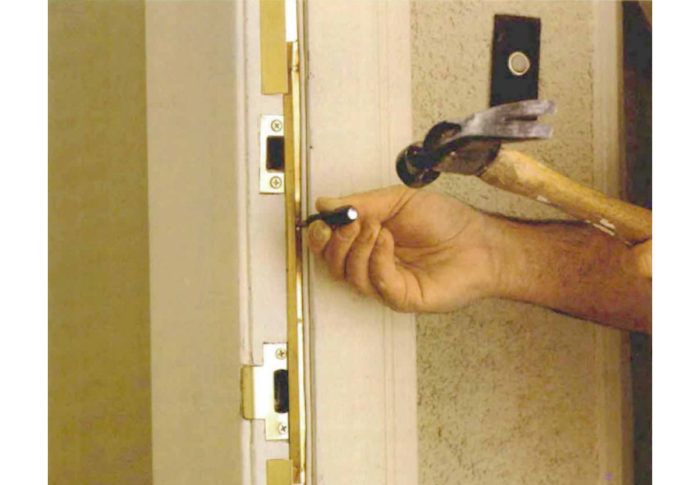Three Ways to Weatherstrip a Door
Whether vinyl, silicone or bronze, an airtight seal is your best defense against the weather.

Synopsis: Three approaches to sealing out air and water infiltration at the front door, including a discussion of vinyl, silicone, and bronze weatherstripping. The alternatives include V-bronze, rigid-jamb, and kerfed products.
Weatherproofing exterior doors isn’t important. It’s critical. When wind-driven water finds its way inside a house, it can seep into and stain wood floors, delaminate the plywood underneath the floor and get into vinyl and laminate flooring. Just as bad — or worse — are the invisible airleaks around doors. A weak seal between door and jamb can cost plenty in escaping energy.
This is why weatherstripping is so important. Although weatherstripping an exterior door won’t make it seal like a refrigerator, these gasket-like strips will help to keep wind and water where they belong — outside. As usual in the building industry, though, there seems to be a dizzying array of weatherstripping products, at least at first glance. But the subject is fairly black and white — and not just because there are only a few colors to choose from.
I use just three common types of weatherstripping. All three are easy to install and are usually available at good hardware stores. Most important, all three keep the elements at bay, unlike some of the cheaper stick-on varieties. Unfortunately, no single product is perfect for every door in every home, so knowing the difference makes it easier to choose the right product for your door.
Bronze will beat back a gale
Bronze is the most durable weatherstripping material, and “cushion bronze” or “V-bronze” — a thin strip of bronze folded lengthwise into a “V” and squeezed between the door and jamb — is the best way to get a tight seal. V-bronze — especially when combined with another seal, such as silicone — stops 99% of the water that charges a door. Whether you are remodeling or weatherstripping a new door, V-bronze is hard to beat.
Every miracle cure has side effects, and V-bronze is no exception. Some people don’t like its traditional look, and V-bronze can be time consuming and finicky to attach to a door opening. There are lots of little brass nails to drive, you need a separate strip at the lockset, and the stuff is hard to paint around once installed.
To a lot of people, bronze is simply old fashioned and ineffective compared with other seals. But the bronze they are probably thinking of is “spring bronze,” which is far less adept at stopping water than V-bronze. Spring bronze is a flat strip of metal crimped slightly at one edge so that it will contact the door when it closes. The problem with spring bronze is that over time, it loses its spring and flattens out. With V-bronze, weather and light penetration are not a problem.
Rigid-jamb weatherstripping is popular for old doors
Rigid-jamb weatherstripping (also known as “jamb-up” and “adjustable-jamb” weatherstripping) has been widely used since the 1950s and is still installed in many new houses. It’s popular among remodelers, especially in cases where the existing door jambs are not being replaced. This type of weatherstripping is screwed to the outside of the door, making it easy to install on old doors.
For more photos and details, click the View PDF button below:


























